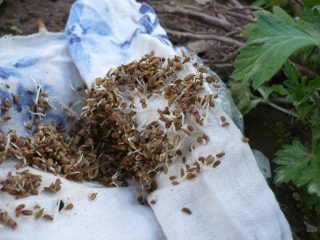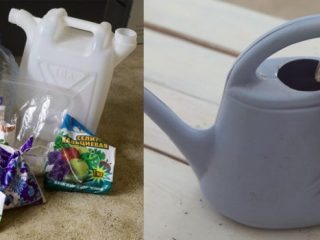Content
Carrots, like many garden crops, are susceptible to attack by pests. Some insects prefer to feast on juicy tops, others prefer root vegetables. This leads to a slowdown in the development of seedlings, loss of marketable qualities of carrots, and a decrease in the level of keeping quality and yield. To prevent this, every gardener should know how and with what to treat carrots against pests when the first signs of damage appear. This will allow you to take timely measures for destruction and minimize the damage that insects can cause to the crop.

The possibility of pest damage to carrots cannot be completely excluded.
Causes of pests
Carrots are characterized by relative undemanding properties. However, for the full growth and development of the root crop, certain conditions are necessary. If they do not comply, the plant’s immunity decreases and the likelihood of it being attacked by pests increases. Any errors in agricultural technology can also lead to this.
Provoking factors:
- sudden temperature changes;
- prolonged stagnation of moisture in the soil;
- dry air;
- lack of nutrients;
- dense plantings;
- bad light;
- inconsistency of climatic conditions.
How to deal with carrot pests
Knowing the common pests of carrots and methods of controlling them, you can count on a good harvest of root crops. But measures need to be taken immediately when the first alarming signs appear, before the insects have time to multiply en masse. Therefore, photos and descriptions of the worst carrot pests, as well as treatment methods, will help the gardener promptly recognize and eliminate the problem.
carrot fly
This flying pest is characterized by its small size. The length of the insect is 4-5 mm. The fly's abdomen and shield are black, with a shiny tint, the head is brown, the legs are yellow, and the wings are transparent. The active years of the carrot fly (Psila rosae) begin during the flowering period of apple trees, which occurs in late April or early May. Favorable conditions for the insect are soil temperature +16-+17 °C at a depth of 5-10 cm.
At the end of May, female pests lay eggs in the ground near the carrots. Subsequently, yellow worm-like larvae appear and feed on root crops. Signs of damage: the tops acquire an unnatural red-violet color, tunnels appear on the carrots right up to the core, which subsequently rot. This leads to root vegetables cracking, acquiring a bitter taste, and black spots appearing on the surface.
This pest of carrot roots reactivates at the end of summer, when a new generation of voracious larvae appears.
To destroy the insect, insecticides Pochin, Bazudin, Zemlin should be used.Regular loosening of the soil, early sowing, and timely thinning help prevent damage to carrots. Experienced gardeners also recommend planting onions in a bed with root vegetables. To repel carrot flies, you can use ammonia at the rate of 50 ml per 10 liters of water. Periodically spray the soil between the rows with the resulting solution.
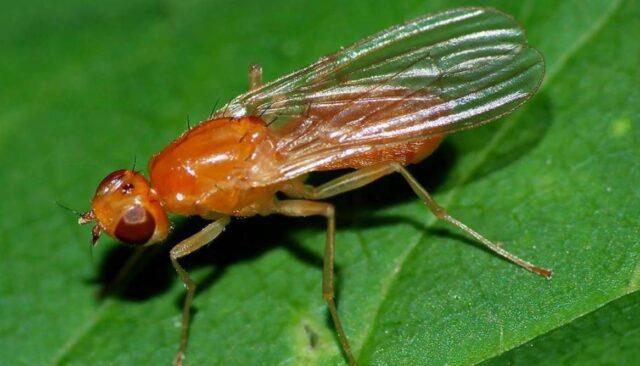
When the fly multiplies massively, carrot yield losses reach 80-90%
psyllid
This is a small flying insect with a greenish tint. Body length does not exceed 2 mm. Damage to carrots is caused by larvae and nymphs feeding on juice. This weakens the plant and slows down development. The psyllid is activated at the stage of emergence and growth of the first true leaves, which causes curling.
The pest overwinters on pine and wild carrots. In May, the psyllid (Psyllidae) lays eggs on root crops. You can find it on the back of the leaves. After 3-4 weeks, larvae emerge from the eggs.
To treat carrots against pests, the following preparations should be used:
- Aktellik;
- Tsitkor;
- Inta-Vir;
- Spark.
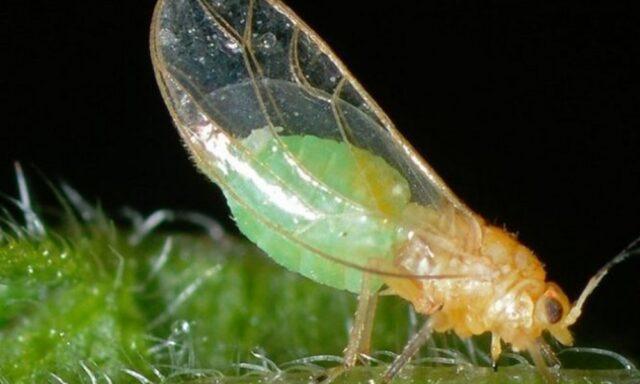
The psyllid can destroy the entire carrot crop
Garden moth
This is a flying insect of a gray-brown hue with a wingspan of up to 2 cm. The active years of the garden moth occur at the end of June and August. Lays eggs in inflorescences. Subsequently, brown caterpillars 11-13 mm long appear. They feed on the leaves of the plant and weaken it.
During its life, the garden moth (Scrobipalpa ocellatella) forms a sticky web that entangles the affected plants. As a result, carrot development slows down.To combat garden moths, it is recommended to use Enterobacterin, Dendrobacillin and Lepidocid. The occurrence can be prevented by timely weeding of root crop plantings.
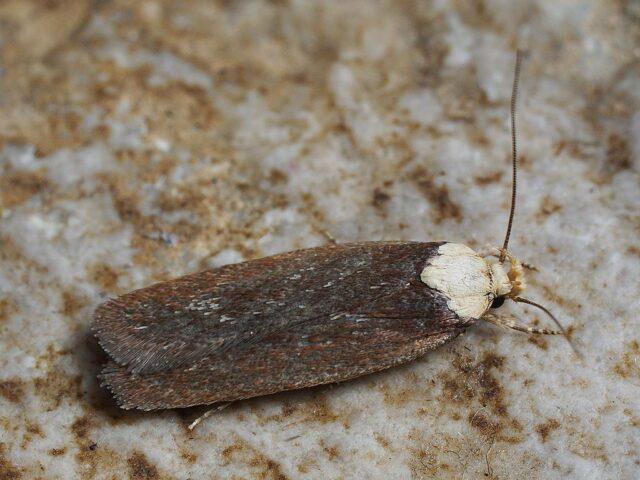
Garden moth affects all umbrella crops
Root nematode
This pest is mainly distributed in the southern regions of the country. The root-knot nematode (Meloidogyne marioni) is a small transparent worm whose body is round, 2 mm long with a dense shell. Pests prefer sandy soil, which allows them to move and breathe quickly. Root-knot nematodes infect carrot roots, on which swellings and thickenings appear. They burst and rot over time. This leads to significant crop losses.
It is impossible to save affected carrots. But you can destroy pests in the garden and prevent their mass spread with the help of the drugs Nematophagin BT, Nematorin, Bassamil. The working solution should be watered generously onto the soil.
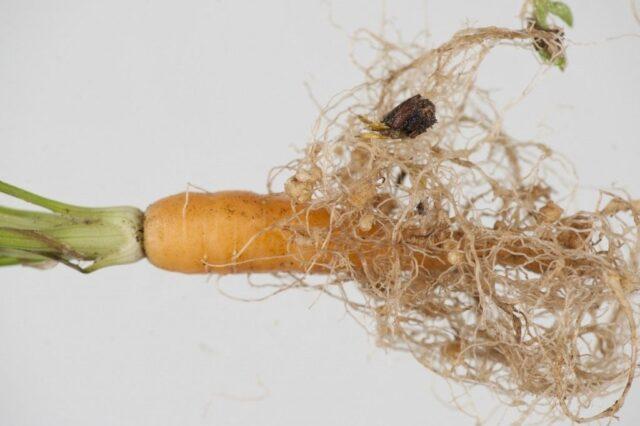
Calendula and marigolds repel root-knot nematodes
Medvedka
This is a large insect, the body length of which reaches 5-6 cm. The mole cricket belongs to the order Orthoptera, just like crickets, grasshoppers, and locusts.
The appearance of this pest is unusual. The mole cricket's abdomen is three times larger than its head. At the same time, at the end of the body there are two processes 1 cm long. On the head there are bulging eyes, long mustaches, an oral cavity and tentacles, like a crayfish. The insect has a hard shell on its chest, two pairs of limbs and long scaly wings. The main color of the body is dark brown.
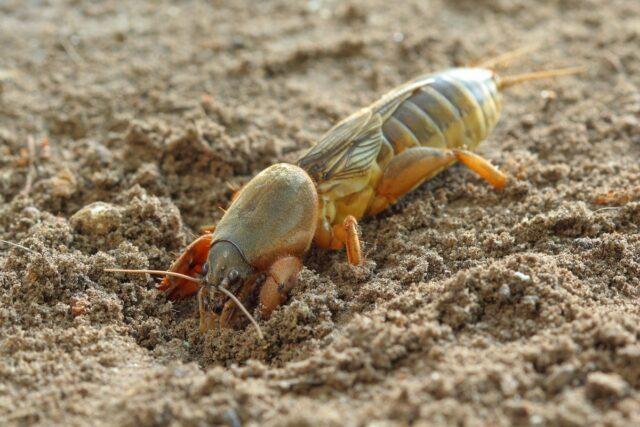
The life cycle of a mole cricket is 1.5-2 years, depending on the climate of the region
The pest lives underground at a depth of 10-15 cm and comes to the surface only at night. But even if you manage to see it, it is unlikely that you will be able to catch it, since it flies well, quickly digs holes and swims.
The mole cricket (Gryllotalpidae) prefers to settle in areas rich in organic matter. It feeds on wireworms, earthworms, and chafer larvae. In the process of its life activity, it causes damage to carrots, turning the roots of the plant outward, which leads to their death.
To destroy mole crickets in an area with carrots, you should use chemicals:
- Anti-Medvedka;
- Medvedox;
- Medvecid;
- Rembek;
- Phenaxin.
Eggshells also help to cope with the invasion of carrot pests in the garden. It must first be dried and then crushed. Pour a small amount of sunflower oil into the resulting mixture and mix. Lay eggshells in a thick layer when planting carrot seeds.
Wireworm
This carrot pest is the larva of the click beetle. It looks like a small yellow worm with a dense shiny coat. Wireworms (Elateridae) live in the soil at a depth of 5-10 cm. They feed on the pulp of root crops and make tunnels in it. This causes yellowing of the tops and a stop in the development of carrots. As a result, the crop not only loses marketability, but the taste of the fruit deteriorates. When storing carrots affected by this pest, the root crops quickly rot.
To combat the larva of the click beetle, Aktara and Etonem should be used. You need to water the soil at the base of the carrots with the prepared working solution.Liming the soil also helps get rid of the pest, but within reasonable limits. Experienced gardeners recommend using toxic baits against wireworms - barley and corn treated with insecticides. They should be laid out between the rows of carrots, and also placed in the holes when planting.
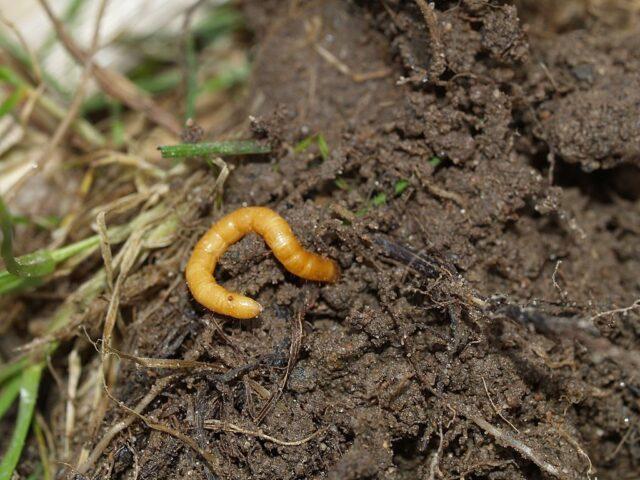
Wireworm affects not only carrots, but also potatoes and beets
Naked slugs
This pest is nocturnal, which makes it difficult to control. Naked slugs (Limacidae) feed on roots, leaves and inflorescences of carrots. The damage can be recognized by the thin strip of mucus left by the pest on the ground and root crops.
To combat naked slugs, Metaldehyde, Meta, and Thunder should be used. The drug must be scattered between the rows of root crops. These carrot pests should also be combated using folk remedies. Namely, sprinkle tobacco dust, sand and wood ash on and around the garden bed.
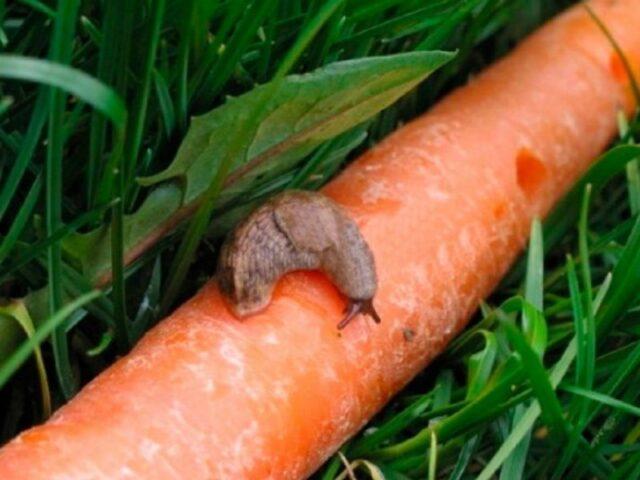
Worm-like mollusks hide in damp, dark places during the day
Fall armyworm
This inconspicuous-looking butterfly can also cause significant damage to carrot plantings. Namely, its voracious caterpillars. The larvae eat up germinating seeds and seedlings, gnaw off young leaves and damage the root of the plant. The larvae of the winter armyworm (Agrotis segetum) overwinter at a depth of 25 cm and withstand frosts down to -11 °C. With the arrival of spring warmth, pests move to the top layer of soil, and by the beginning of summer a new generation of butterflies appears, each of which is capable of hatching up to two thousand caterpillars.
To combat the pest, you need to spray the carrots and water them with the working solution of Aktara, Decis, Polytrin, Fury.Among the folk remedies, you can use an infusion of chamomile or burdock, the smell of which repels the winter cutworm. To prepare them, you need to pour boiling water over 100 g of leaves and inflorescences, leave for three hours and strain. It is necessary to treat not only the tops with the product, but also water the soil at the base of the carrots.
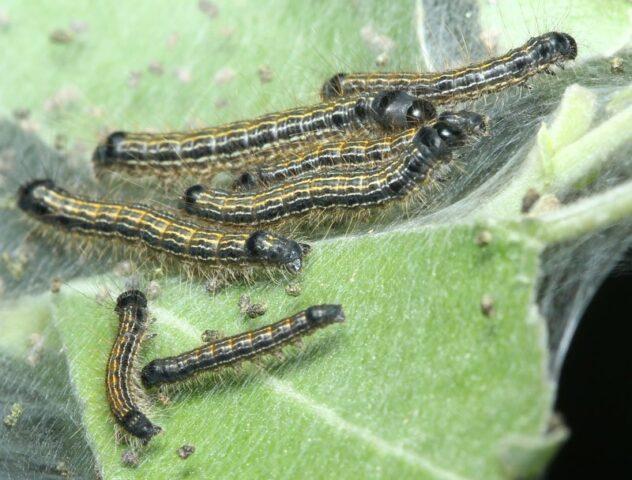
Fall armyworm damages more than 140 plant species
Aphid
This small green insect feeds on the juice of carrot leaves. Aphids form entire colonies that inhibit the growth and development of root crops. During its life, the pest secretes a sticky, sweet liquid, which is a favorable environment for the growth of sooty fungus.
To treat carrots against these pests you can use:
- Fitoverm;
- Decis;
- Inta-vir;
- Spark.
Aphids (Aphidoidea) can be controlled by placing cloves of garlic, onion and red pepper between rows of plants.
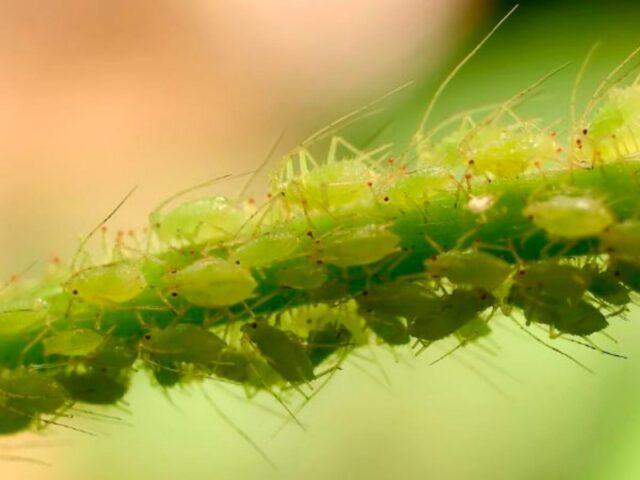
Watering carrots from above reduces the number of aphids in the area
Rats and mice
Rodents can also damage carrot plantings. These pests, quenching thirst and hunger, damage roots and young leaves. To combat mice and rats, you need to use special long-acting toxic baits. They should be laid out throughout the area, refreshed every two weeks.
Effective remedies:
- Rat Death;
- Storm;
- Krysid;
- Nutcracker.
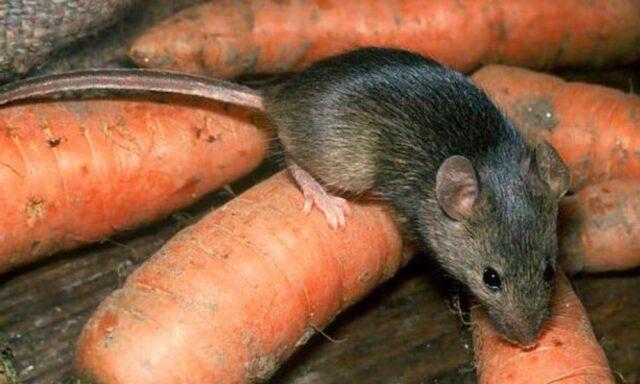
Rats and mice become especially active in the fall with the arrival of cold weather.
Preventive measures
It is necessary to combat carrot pests not only when they appear in the garden, but also with the help of preventive measures. But to achieve the desired result, they need to be carried out regularly.
Basic preventive measures:
- timely removal of weeds;
- periodic loosening of the soil;
- compliance with crop rotation;
- use of green manure;
- planting marigolds, calendula, garlic, and onions nearby;
- compliance with agricultural technology rules;
- removal of vegetation residues;
- autumn digging of the bed.
Conclusion
Knowing how to treat carrots against pests, you can save the crop at the stage of growth and development. But to minimize risks, it is necessary to maintain plant immunity at a high level. And for this it is necessary to limit the application of organic matter and nitrogen fertilizers, and carry out potassium fertilizing. Crop rotation should also be taken into account, otherwise all the gardener’s efforts will be wasted.







